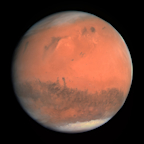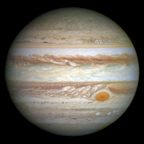Search results
Welcome to our home. Kitchens, bathrooms, bedrooms, gardens, home decor and more.
Dark, cold and whipped by supersonic winds, giant Neptune is the eighth and most distant major planet orbiting our Sun. More than 30 times as far from the Sun as Earth, Neptune is not visible to the naked eye. In 2011, Neptune completed its first 165-year orbit since its discovery.
Neptune is one of two ice giants in the outer solar system (the other is Uranus). Most (80% or more) of the planet's mass is made up of a hot dense fluid of "icy" materials – water, methane, and ammonia – above a small, rocky core. Of the giant planets, Neptune is the densest.
NEPTUNE is the world's first regional-scale underwater ocean observatory that plugs directly into the Internet. NEPTUNE is the largest installation on the Ocean Networks Canada network of ocean observatories.
Neptune is the fourth largest planet in the Solar System and the third most massive. Neptune is 17 times the mass of Earth, but just 1 ⁄ 18 the mass of Jupiter. Neptune is a little bit more massive than Uranus, though Neptune is denser and smaller in size than Uranus.
Jun 26, 2024 · Neptune, third most massive planet of the solar system and the eighth and outermost planet from the Sun. Because of its great distance from Earth, it cannot be seen with the unaided eye. With a small telescope, it appears as a tiny, faint blue-green disk. It is designated by the symbol ♆.
Dark, cold, and whipped by supersonic winds, ice giant Neptune is the eighth and most distant planet in our solar system. More than 30 times as far from the Sun as Earth, Neptune is the only planet in our solar system not visible to the naked eye.



















